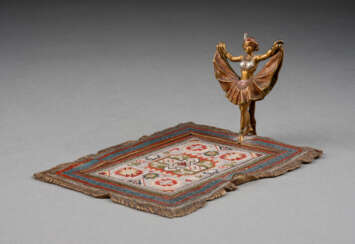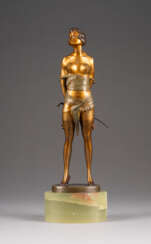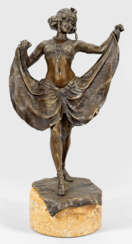bronze erotic sculpture.

Jef Lambeaux, full name Joseph Marie Thomas Lambeaux, was a Belgian sculptor who combined realism and the Renaissance.
Lambeaux studied at the Academy of Fine Arts in Antwerp and was a member of the Van Beers clique, a group of eccentric young artists that also included the artists Piet Verhart (1852-1908) and Alexander Streiss (1852-1941). He later became a founder of the Brussels-based avant-garde group Les Vingt.
Lambeaux's sculptures have often provoked mixed reactions, but they are a reinterpretation of Renaissance and Baroque body image. Turning to classical themes in depicting nudes in motion, Lambeaux created many fountain figures, park sculptures and monuments. Among them is the Brabo Fountain, which has become a landmark in Antwerp. For the 1897 World's Fair pavilion, he created a large-scale marble bas-relief "Temple of Human Passion", which was condemned by the Catholic Church for being a "marble brothel".
The sculptor was known for his love of competitive wrestlers and boxers, and adored circus performances. Scenes of struggle and love are a constant theme of Lambeaux's work. His sculpture "Wrestlers" is also inspired by the popular Renaissance theme of two naked bodies straining all their strength in an extreme struggle.
In 1903, Jef Lambeaux became a member of the Royal Belgian Academy.


Waldemar Nottbohm is a German painter, sculptor and teacher. He studied art in Hamburg, Hanover and Lüneburg. In 1957 he received a sculptor's degree in stonemasonry and metal design.
Waldemar Nottbohm is known for his abstract geometric sculptures in different materials.



Franz von Stuck was a German painter, sculptor, printmaker, and architect. Stuck was best known for his paintings of ancient mythology, receiving substantial critical acclaim with The Sin in 1892.


Paul Wunderlich was a German painter, sculptor and graphic artist. He designed Surrealist paintings and erotic sculptures. He often created paintings which referred to mythological legends.










































































